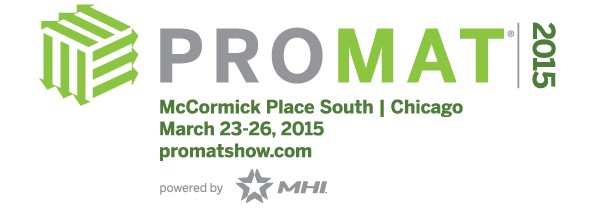ProMat 2015 Recap: Emerging Industry Trends and Best Practices for Optimization in 2015
By Ron Sledzieski, Executive Business Director, Sealed Air
Having just returned from the ProMat 2015 trade show, where leaders in the material handling, logistics equipment and technologies industry gathered, it’s worth recapping some of the most significant current and emerging trends impacting the business landscape.
One trend that is already affecting businesses is the recently enacted dimensional weight policy changes.
A popular topic of discussion at ProMat this year, the dimensional weight policy changes began in January 2015 and are aimed at incenting shippers to more properly and responsibly pack their items. This change by UPS and FedEx was motivated by capacity problems in their delivery infrastructure experienced during the peak of the 2013 holiday season that resulted in many late deliveries. The new “dim weight” pricing policies incent shippers to create a smaller, denser container by using efficient packaging materials in order to create a more sustainable distribution process.
New dimensional weight policies are highly related to another trend: the ever-increasing growth and prevalence of e-commerce shipments. The rise in e-commerce orders played a large role in the 2013 holiday shipping issues, as online orders grew so rapidly that shippers were unable to fulfill the orders on time.
More and more, consumers are electing to purchase myriad products online and their expectations associated with the e-retail experience also continue to rise. As they avoid the traditional retail experience, they still expect to receive a package that accurately reflects the product they’ve purchased as an extension of the brand. The bottom line is that the presentation of shipped products to consumers heavily influences the e-commerce customer experience and consumers’ image of retailers.
Finally, a third and highly prevalent topic, pertinent to all industries and markets, is the amount of attention being placed on corporate sustainability efforts. It’s increasingly important for businesses to show that they are taking steps to become more sustainable – not just in the materials they use, but in the way they operate their business. For example, a business may choose to use a minimal amount of paper for protective packaging, thinking that’s a more sustainable choice; but, if that product arrives to the customer damaged and has to be returned to the retailer, and then shipped back to the customer – that actually does more harm to the environment.
One of the most common questions we’re asked, is how to adhere to the dimensional weight requirements while also cutting costs, remaining sustainable and effectively filling all e-commerce orders in a timely fashion. Luckily, it’s not as hard as you might think.
First, consider leveraging a Packaging Value-Analysis: Some packaging companies are able to analyze customers’ entire operation, from labor, to warehouse space, to shipping costs. This allows the business to look at the broader picture and consider where value can be added to reduce overall costs while improving sustainability and reducing product damage.
Additionally, under new dimensional weight requirements, many companies will need to invest in new inventory to right-size packages and reduce overall costs. Consider the following example.
After completing a packaging value-analysis, it’s recommended that Company X invest $1,000 in inventory of a smaller, more right-sized box along with a higher performance packaging material for shipping their bathroom scales. Company X is hesitant to use up valuable warehouse space and add an additional carton SKU, but with the new dim weight policies and shipping 250 of these scales per week, the company stands to save $18,000 per year if they switch to the smaller carton. This is a very compelling savings when looking at an estimated inventory carrying cost of only $100-$200 annually for the $1000 of new inventory of the smaller carton.
Finally, businesses stand to gain value in switching to a premium packaging solution. Keep in mind that a high volume of returns, regardless of the type or amount of material used to protect the product, increases the carbon footprint placed on the environment. Using a premium protective solution not only increases the likelihood that a product arrives to the customer intact and undamaged, but can also enhance the overall e-commerce customer experience and help drive brand loyalty.
Sealed Air is a member company of MHI.
Ron Sledzieski is an Executive Business Director within Sealed Air’s Product Care division. A Sealed Air team member for almost 20 years, Sledzieski has held various leadership roles with the company. In his role within operations, he utilized Lean Six Sigma methodologies to minimize and eliminate waste and continues to utilize this approach in his role of leading the global business of the Sealed Air Instapak product line. To learn more about dimensional weight, e-commerce and related trends impacting packaging and shipping, visit SealedAir.com/e-commerce or call 800-648-9093.





